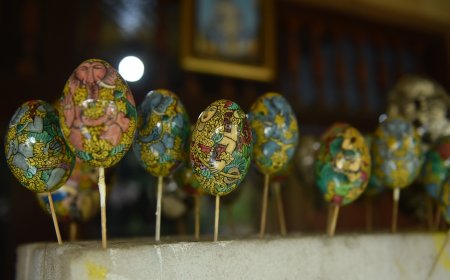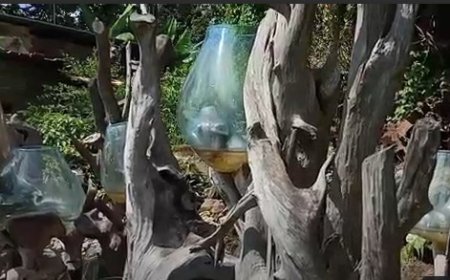The Art of Balinese Carved Dulang: Crafts that can Raise the Economic Level of Residents
Bali Province is one of the regions that has a growing creative small industry sector, many products from the creative industry are produced by the talented hands of Balinese people. Especially since the majority of the population of the Island of the Gods is Hindu, so many small businesses have sprung up that produce equipment for holding prayers such as dulang used to put offerings or banten.
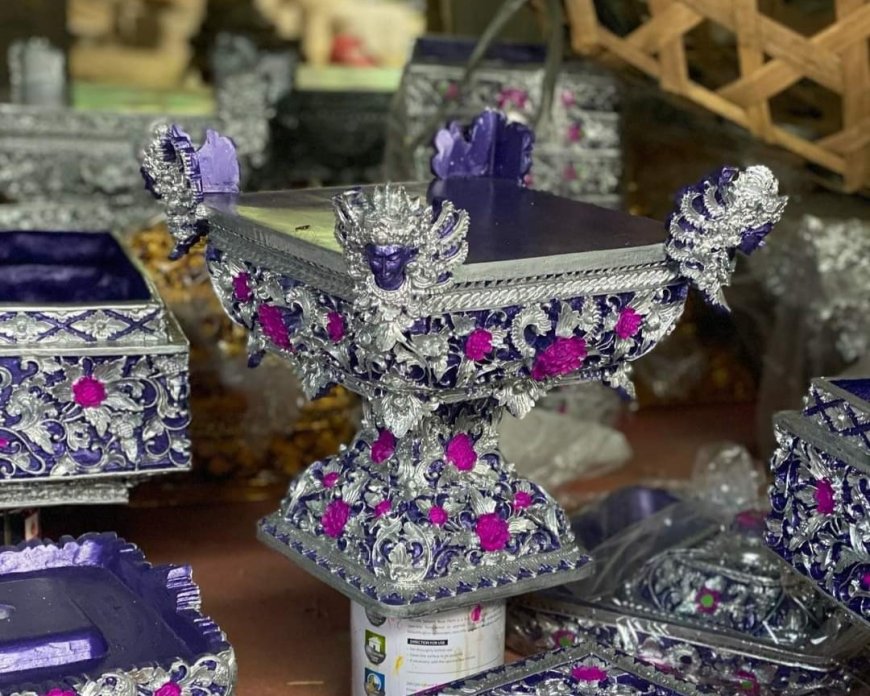
Dulang plays an important role as a ceremonial tool in Balinese Hinduism, serving as the base for banten or gebogan. Dulang is a circular tray with a flat surface, and is usually lipped at the edges. In addition, dulang also has many choices of models, motifs and shapes. However, the attraction of the dulang itself is that there are beautiful carvings accompanied by beautiful coloring that make the dulang look more attractive.
In one area, especially on the land of the Island of the Gods, there is one village known as the center of Balinese carved dulang made from fiber-resin, the name of the village is Bresela Village, Payangan District, Gianyar. The crafts that are able to raise the economic level of these residents have been pioneered since the 1970s as one of the wood crafts. Prebekel of Bresela Village, I Wayan Dirka, said that before using fiber and resin, the wooden dulang craft was the origin. This wooden craft lasted until the 2000s.
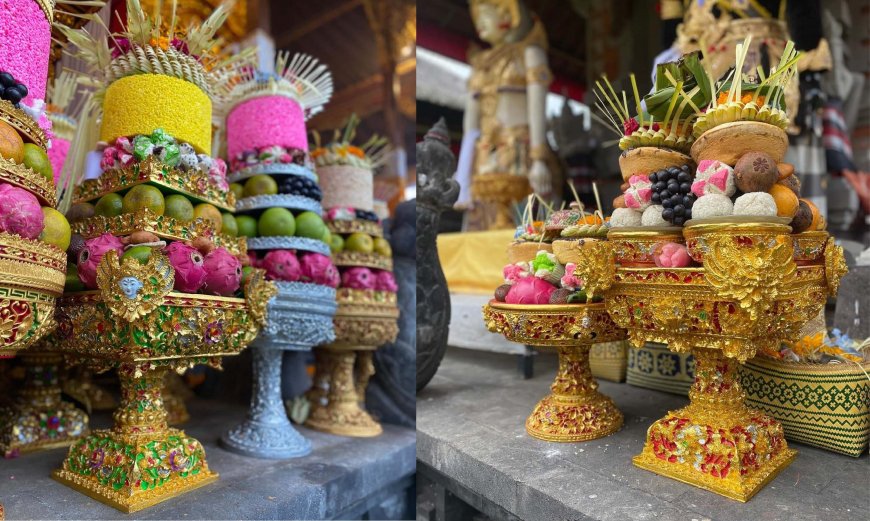
Dulang as a Base for Banten or Gebogan (Photo Source : Taksu Dulang Bali)
Dulang crafts made by the community at that time tended to use materials from wood, bamboo, rattan, or brass. However, over time, wood-carved dulang experienced a decline in demand and eventually stagnated. This condition caused the income of a number of artisans to decline drastically. Seeing the declining economy of the people of Bresela Village finally triggered a craftsman named Ngakan Made Swastana to move to improve the condition.
Ngakan Made Swastana started to be creative by making ceremonial facilities using gypsum. However, it still did not meet the durability standards. This is because gypsum tends to break easily or get damaged quickly, which makes it unfit for long-term use. In addition, the prada (gold) paint also did not stick well. Over time Ngakan Made Swastana finally took the initiative with his creations again to make dulang crafts with fiber materials, because dulang made of fiber materials in addition to cheap production costs, in terms of production time and weight of crafts are also shorter and quite light.
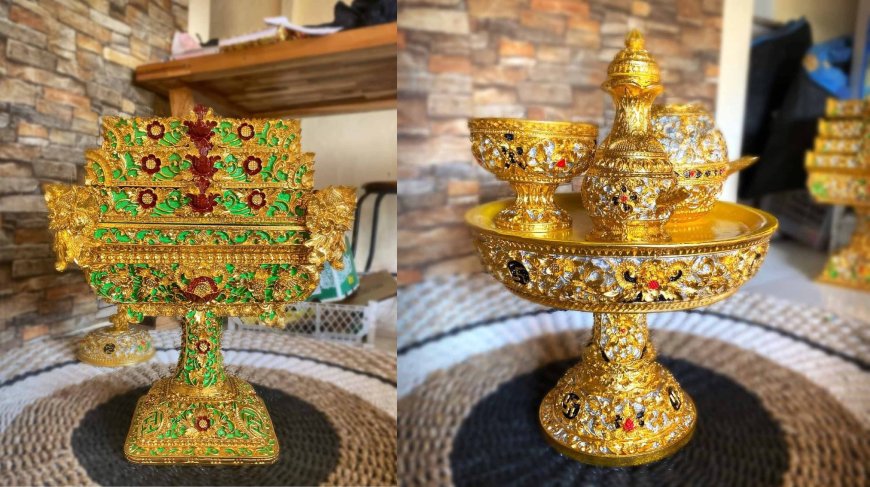
Carving Dulang Art (Photo Source : Taksu Dulang Bali)
Since this fiber dulang craft was produced, consumer interest has increased compared to dulang made from wood. Thus, fiber dulang is a new breakthrough that began to be intensified around 2003 until now and continues to grow. Eventually, fiber-made toast became the main source of livelihood for the villagers. Around 90 to 100 households in Bresela Village are engaged in this fiber dulang craft.
According to Made Swastana, it only takes about 30 minutes to make one set or one piece of fiber dulang craft. The production process begins with the molding process, where the basic ingredients used such as resin, talc, catalyst, are mixed and then stirred for 2 minutes. Next, the mixture is poured over rubber (a mold specially made by craftsmen in the shape of the product to be made). After being spread evenly, the mold is waited for approximately 15 minutes until it is completely dry. For the adhesive part, a raw material called meth is used. The dried molds are then smoothed using emery paper and caulked before entering the final process or finishing.
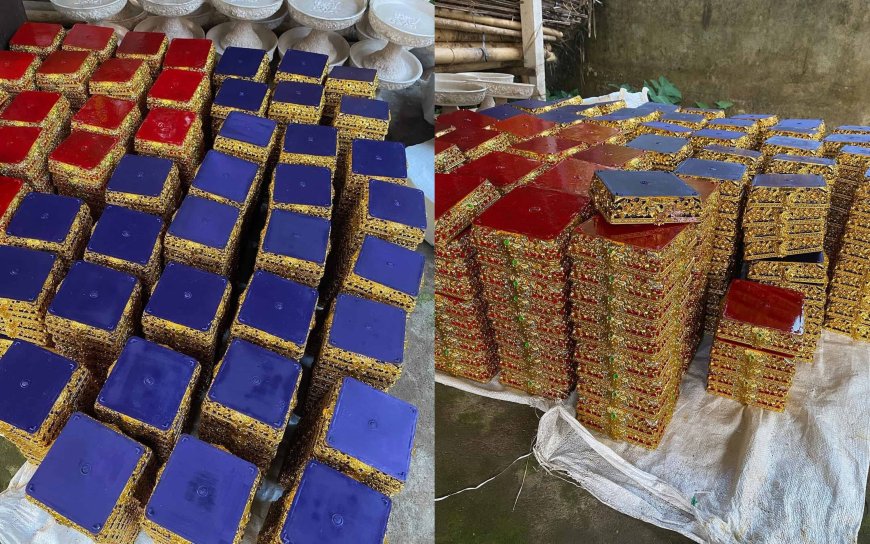
Dulang Making Process (Photo Source : Taksu Dulang Bali)
Another fiber dulang craftsman, I Wayan Yadnya Putra, explained that the final process is that all parts of the dulang are painted with red base paint, usually using pasko paint. After the red base paint is dry, it is then painted with gold (prada) according to the design and requests from consumers, then all products that have gone through the final process are then dried with sunlight or using an oven if there is no sunlight.
According to one of the artisans and entrepreneurs of resin-carved toasts in Bresela Village, IA Pradnya Dewi, the production of these carved toasts has been marketed abroad. The two main international markets are Europe and Australia. The flat circular toast is supported by a single support, making it resemble a round table with a single pole. The appearance of this kind of dulang is suitable for foreigners to use as a medium to display fruits for parties, hotels, and others.


















































